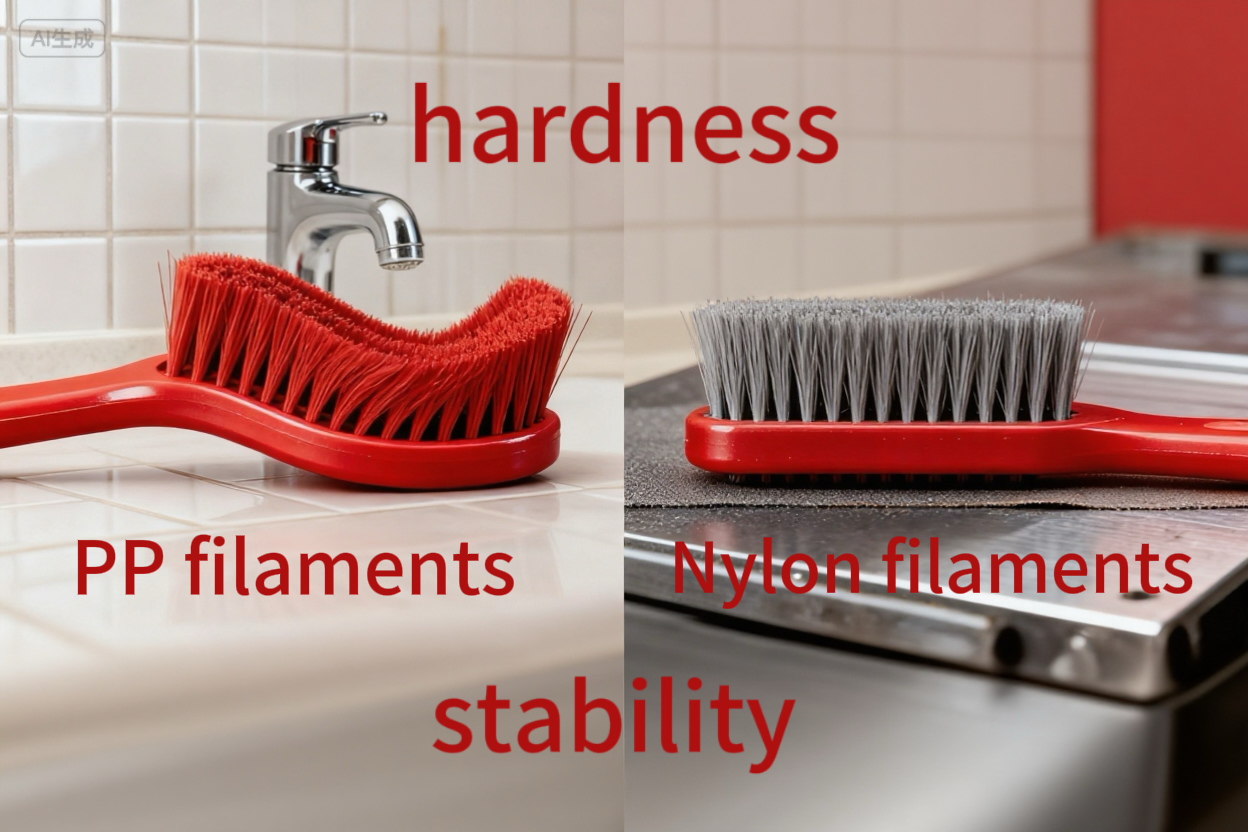Comparison of PP Synthetic Fiber and Nylon Brush Filament
When selecting brush filaments understanding the hardness differences between polypropylene (PP) and nylon is crucial. Here’s a core comparison:

- Fundamental Characteristics
PP Synthetic Fiber: Made from polypropylene, these fibers are lightweight, acid and alkali-resistant, and cost-effective. They offer medium stiffness with moderate toughness, but their hardness is significantly influenced by manufacturing processes.
Nylon Brush Filaments: Typically made from polyamide (commonly PA6 and PA66), nylon filaments have strong hydrogen bonds between molecules, providing high toughness and wear resistance. Their hardness range is much broader.
- Key Differences in Hardness
Base Hardness: Under standard conditions, PP filaments exhibit a Shore hardness of 60D-75D, making them relatively soft and prone to deformation. In contrast, PA6 nylon filaments range from 75D to 85D, while PA66 can reach 80D to 90D, offering better resistance to deformation.
Stability: PP filaments lose hardness significantly when exposed to temperatures above 60°C or strong acids and bases. Nylon filaments, however, can withstand temperatures between 150°C and 220°C, maintaining stable hardness in typical environments.
Modification Potential: The potential for hardening PP filaments is limited (usually maxing out around 85D), and they tend to become brittle when modified. Nylon filaments can be hardened to over 100D (e.g., through glass fiber modification) or softened to below 50D, providing greater adaptability for various applications.
- Selection Recommendations
Choose PP Brush Filaments: Ideal for low hardness and budget-friendly applications, such as household cleaning brushes or pet grooming brushes.
Opt for Nylon Brush Filaments: Best suited for high hardness and stability requirements, such as industrial grinding brushes or high-temperature cleaning brushes.
In summary, while nylon filaments offer superior hardness and stability, it's essential to consider the specific application and budget, as higher hardness is not always better.






























